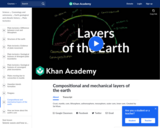
Crust, mantle, core, lithosphere, asthenosphere, mesosphere, outer core, inner core
- Subject:
- Astronomy
- Physical Science
- Material Type:
- Lesson
- Provider:
- Khan Academy
- Author:
- Sal Khan
- Date Added:
- 09/22/2013

Crust, mantle, core, lithosphere, asthenosphere, mesosphere, outer core, inner core
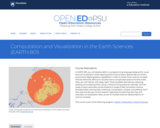
In EARTH 801, you will develop skills in a programming language designed for visual arts and visualization while exploring Earth science topics. Specifically, you'll learn and practice digital graphics capabilities in order to render Earth science concepts that are otherwise difficult to visualize due to complicated space and time scales. Here, you will interact with large, open, freely-available data sets by collecting, plotting, and analyzing them using a variety of computational methods. You'll be ready to teach secondary school students a range of Next Generation Science Standard skills involving data collecting, manipulation, analysis, and plotting. You'll also read and discuss current research regarding the teaching, learning, and evaluation of visualization skills, as well as multiple external representations of science concepts.
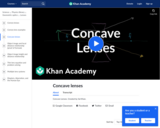
Concave Lenses

Students investigate the property dependence between concentrations and boiling point. In section 1, students first investigate the boiling point of various liquid solutions. In section 2, they analyze data collected by the entire class to generate two boiling point curves, one for salt solutions and one for sugar solutions. Finally, in section 3, students use the data they have analyzed to determine how to create a solution that has a particular boiling point and is a cost-effective design.
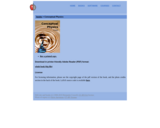
For a semester-length course, all seven chapters can be covered. For a shorter course, the book is designed so that chapters 1, 2, and 5 are the only ones that are required for continuity; any of the others can be included or omitted at the instructors discretion, with the only constraint being that chapter 6 requires chapter 4.
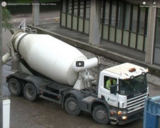
Professor Poliakoff overcomes his fear of tall ladders to observe the chemistry of concrete.

Each winter, massive waves attract surfers and visitors to the North Shore of Oahu in Hawaii. Some years, the waves cause severe erosion, and continuing sea level rise will accelerate this issue. Residents and the state are taking steps to preserve homes and beaches.
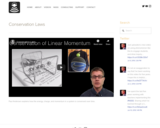
Paul Andersen explains how the energy, charge, and momentum in a system is conserved over time.
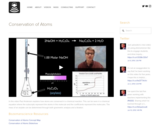
In this video Paul Andersen explains how atoms are conserved in a chemical reaction. This can be seen in a chemical equation where the subscripts represent the atoms in the molecule and the coefficients represent the molecules. The mass of an anylate can be determined through both gravimetric analysis and a titration.
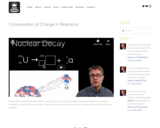
Paul Andersen explains how the charge is conserved in nuclear reactions. When elementary particles are created or destroyed in a reaction the net change in charge will remain constant. Alpha, beta -, and beta+ decay are all included as examples.
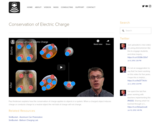
Paul Andersen explains how the conservation of charge applies to objects in a system. When a charged object induces charge or conducts charge to a neutral object the net total of charge will not change.

In this video Paul Andersen explains how energy can neither be created nor destroyed but may be transferred. Energy comes in many forms (including chemical, mechanical, light, electrical, and thermal). In AP Chemistry students must be accountable for interactions involving an increase in volume over time.
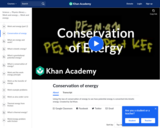
Using the law of conservation of energy to see how potential energy is converted into kinetic energy
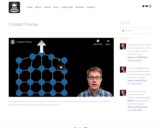
Paul Andersen explains how contact forces result from interatomic forces. The following forces are explained at the interatomic level: normal force, applied force, friction force, tension force, spring force, and buoyant force.
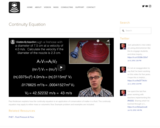
Paul Andersen explains how the continuity equation is an application of conservation of matter in a fluid. The continuity equation may apply to either mass or volumetric flow. Example problem and examples are included.
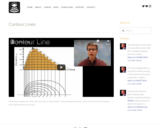
Paul Andersen explains how contour lines show areas of equal elevation or equal gravitational potential. Contour lines are used as an analogy for lines of equipotential in electric fields.

Bluetooth is everywhere—from smartphones to computers to cars. Even though students are exposed to this technology, many are not aware of how they can use it themselves to wirelessly control their own creative projects! For this challenge, students build on what they learned during a previous Arduino maker challenge, Make and Control a Servo Arm with Your Computer, and learn how to control a servo with an Android phone (iPhones do not work with the components used in this challenge). By the end of the exercise, expect students to be wirelessly controlling a servo with a simple phone application!
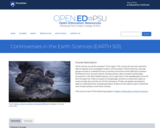
Think science has all the answers? Think again. This course will use real, authentic data to explore and investigate modern controversies in Earth Sciences. Use tide gauge records to understand how countries around the world attempt to protect themselves from tsunami events. Process seismic data to predict earthquake recurrence in the New Madrid seismic zone, right here in the breadbasket of the US. Sort through the millions of years of the geologic timeline to shed some light on what actually did, and did not, kill the dinosaurs. Finally, use global atmospheric data to understand how misrepresentation of data can be used to paint a distorted view of past, present, and future climate.
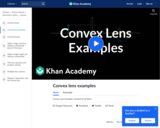
Convex Lens Examples
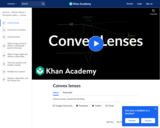
Convex Lenses